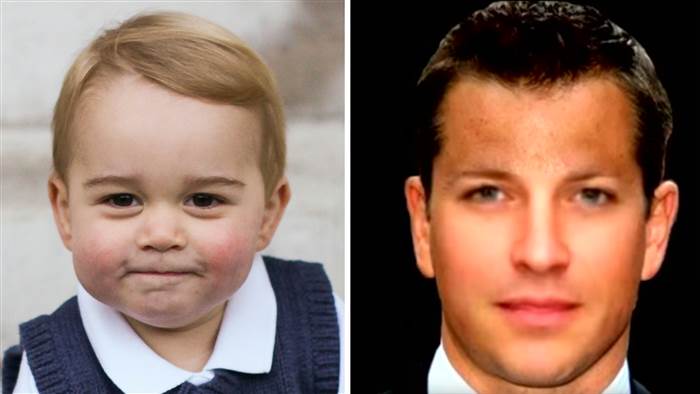-
Tips for becoming a good boxer - November 6, 2020
-
7 expert tips for making your hens night a memorable one - November 6, 2020
-
5 reasons to host your Christmas party on a cruise boat - November 6, 2020
-
What to do when you’re charged with a crime - November 6, 2020
-
Should you get one or multiple dogs? Here’s all you need to know - November 3, 2020
-
A Guide: How to Build Your Very Own Magic Mirror - February 14, 2019
-
Our Top Inspirational Baseball Stars - November 24, 2018
-
Five Tech Tools That Will Help You Turn Your Blog into a Business - November 24, 2018
-
How to Indulge on Vacation without Expanding Your Waist - November 9, 2018
-
5 Strategies for Businesses to Appeal to Today’s Increasingly Mobile-Crazed Customers - November 9, 2018
See what Prince George will look like in the future
Using software to combine the prince’s current facial features and the features of his family members, they’ve predicted what he’ll look like at age 7, 20, 40 and even 60 years old, by which time he might just be King George. Scientists at the University of Bradford have developed aging software with the ability to predict the future appearance of Kate Middleton and Prince William’s 2-year-old.
Advertisement
Now aged two, the third heir to the British throne is already wildly popular among fans of the royals – earlier this week, an Irish baker took won an global competition with a delicious life-sized replica of the little prince in sponge-cake form.
The research, led by Hassan Ugail, the University’s Professor of Visual Computing, explained that their algorithm can verify which traits the child may have inherited from the parents to build a more reliable forecast of their future face.
Ugail explained how the system assumes a “natural age progression”; not taking into account the impact of factors like diet and environment.
So far, he looks like a normal kid – you know, if you ignore that whole royal legacy thing.
“So what we’ve done in the case of George, we’ve taken his picture and then we’ve actually taken facial features and then aged him”. Is it just us or does he look a little like Liam Neeson?
Professor Ugail believes that the programme’s facial predictions are around 80 per cent accurate.
Professor Ugail said: “Computers are much more accurate than humans, so we can be confident of their reliability if they pass that test”.
Advertisement
The team want to use the technology to help find missing children and claim it’s more accurate than the existing technology used by police.




























